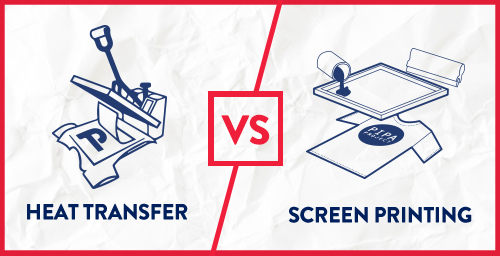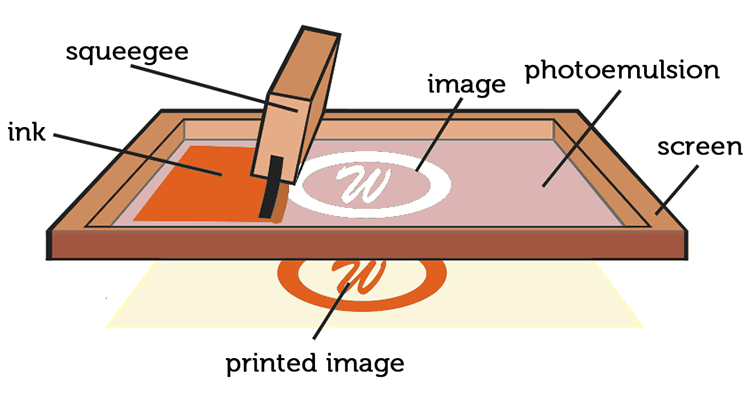The smart Trick of Tx Tees That Nobody is Talking About
The smart Trick of Tx Tees That Nobody is Talking About
Blog Article
Some Known Facts About Tx Tees.
Table of ContentsThe 5-Minute Rule for Tx TeesHow Tx Tees can Save You Time, Stress, and Money.Getting My Tx Tees To WorkWhat Does Tx Tees Do?What Does Tx Tees Do?Getting My Tx Tees To Work5 Easy Facts About Tx Tees Described
Add up various other expenses, like the number of utilities it takes to run the store and the price of ink and solution per design. Take the print below.The emulsion needs to only be a couple of cents considering that you 'd just require to coat one screen for this task. Generally, printers attempt to make up to 45% profit on a print task.

With DTF, you can print a handful of t-shirts, or simply one. Utilize the same calculator as the section above to compute just how much revenue you 'd make utilizing DTF transfers. Compare the prices and revenues to whichever method speaks best to your setup and process. Both screen printing and DTF have their particular niches on the planet.
7 Simple Techniques For Tx Tees
The very best means to understand? Ask around and see what print shops like your own are doing. custom screen printing. Attempt both out and see which you like better
When you're choosing what sort of printing method to make use of for printing your art work designs on your garments, it is necessary that you understand the distinctions between these 2 methods so you can take full advantage of outcomes while lessening prices. Screen printing is the most generally utilized strategy for publishing designs on fabrics.
DTG printing is additionally referred to as spot or direct to garment printing since it prints only what is required instead of making a display as screen printers do. https://www.domestika.org/en/russellcostello79602. Screen printing works by display filler squeegee display printing ink display mesh display, after that moving the picture to garment making use of heat and/or stress
The DTG printer makes use of special dye-sublimation inks that are applied into a pre-designed image by a digital printing system. The inks end up being component of the fabric, enabling vibrant shades and phenomenal information. It's also referred to as area or straight to garment printing because it prints only what is required instead of making a screen as display printers do.
Tx Tees Can Be Fun For Anyone
Initially, it's much quicker - you can publish a fullcolor picture in minutes, in contrast to hours for display printing. Second, there's no set up time or costs included - you can print any type of style you such as, without having to create a screen. Third, there's no waste - since screen printers screen print one design at a time, they have to screen each shade individually.
The paper is really expensive and can only be utilized when. Once it's published on, it has to be thrown out. - The first acquisition price is reduced than the upfront financial investment of DTG printers- You can print multi-color layouts one screen each time rather than having to publish each shade separately like DTG printing.

All about Tx Tees
Nonetheless, rather than utilizing display mesh as display printers do, color sublimation printers utilize laser technology to transfer your photos onto garments or paper. A warmth process moves the color from its solid-state directly into the gas stage which consequently merges it onto fabric substrates when they are rapidly warmed to high temperature levels under high pressure.
Sublimation printing is green. It uses less water than screenprinting, and due to the fact that it does not include the use of dangerous solvents, it's risk-free for all types of clothing. The dye sublimation inks are additionally unsmelling when healed, unlike display printers that utilize harmful chemicals throughout the display printing procedure that leave behind an unpleasant smell.
They likewise save money on pricey tools like exposure devices given that dye sublimation printers do not require a UV direct exposure unit or a flash cure oven that is generally utilized in screen printing (custom monograming). What is direct to garment printing (DTG Printing)? DTG printing is a digital screenprinting procedure that publishes straight onto material using specialized inkjet printers
Our Tx Tees PDFs
DTG printing offers numerous advantages over conventional screenprinting, Source including the capability to print photo quality photos, greater shade vibrancy, and the capability to print layouts on darker materials. DTG printers function by warming the textile ink till it develops into a gas. The gas then penetrates the fabric, bonding with the fibers to produce a long-term print.

Screen printers merely prepare their screen then start printing till they lack item or ink.- There is a variety of skilled display printers throughout the world, which can be valuable for newbies. - It's a slower procedure - screen printers often need to wait for the ink to dry before they can publish the following shade- Display printers call for hands-on labor, so there's a greater discovering contour and it takes longer to produce a premium layout- Screen printing isn't as precise as DTG printing, so you might get some "bleeding" of shades from one component of the photo onto another if not done properly.
Facts About Tx Tees Uncovered
Instead of using display mesh as screen printers do, color sublimation printers utilize laser technology to move your pictures onto garments or paper. A heat procedure moves the dye from its solid-state directly right into the gas stage which consequently merges it onto textile substratums when they are rapidly warmed to high temperatures under high stress.
Sublimation printing is eco-friendly. It utilizes much less water than screenprinting, and due to the fact that it does not entail the usage of hazardous solvents, it's risk-free for all types of garments. The dye sublimation inks are also unsmelling when treated, unlike screen printers that use harmful chemicals during the screen printing procedure that leave behind an undesirable odor.
They also save money on costly tools like direct exposure units because dye sublimation printers don't require a UV direct exposure unit or a flash treatment stove that is usually used in screen printing. What is straight to garment printing (DTG Printing)? DTG printing is an electronic screenprinting process that prints straight onto textile making use of specialized inkjet printers.
4 Easy Facts About Tx Tees Described
DTG printing provides several advantages over conventional screenprinting, including the capacity to print photographic high quality pictures, better shade vibrancy, and the ability to publish layouts on darker textiles. DTG printers function by heating up the fabric ink till it develops into a gas. The gas after that permeates the fabric, bonding with the fibers to create a permanent print.
Report this page